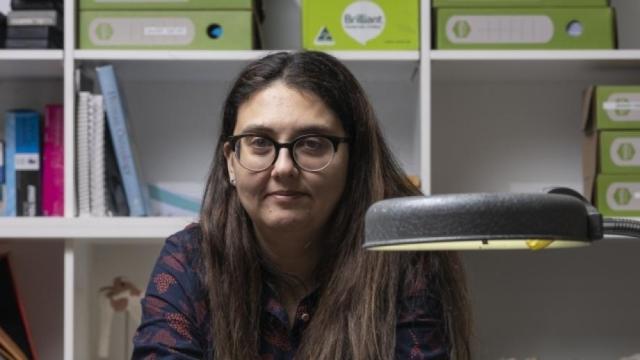
Dr Katharine Balolia. Photo by Jamie Kidston.
Congratulations to biological anthropologist Dr. Katharine Balolia and Masters of Archeological and Evolutionary Sciences (Advanced) alumni Pippa Fitzgerald on their article recently published in Scientific Reports.
Examining the uniquely huge noses of male proboscis monkeys, their new research shows that these enhanced bony nasal structures are associated with both acoustic and visual signalling. Using cranionasal data, Katharine and Pippa's findings support a visual signalling function for male nasal enlargement through a relatively high degree of nasal aperture sexual size dimorphism, the craniofacial region to which nasal soft tissue attaches. Additionally, they find nasal aperture size increases beyond dental maturity among male proboscis monkeys, consistent with the visual signalling hypothesis. They show that the cranionasal region has an acoustic signalling role through pronounced nasal cavity sexual shape dimorphism, wherein male nasal cavity shape allows the expression of loud, low-formant nasalised calls. Therefore, the research provides robust support for the male proboscis monkey nasal complex serving both visual and acoustic functions.
Katharine Balolia is Senior Lecturer in Biological Anthropology in the ANU School of Archaeology and Anthropology.